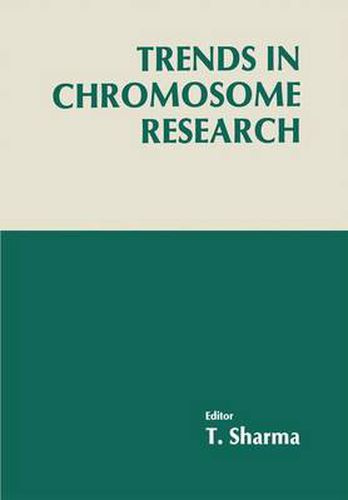Readings Newsletter
Become a Readings Member to make your shopping experience even easier.
Sign in or sign up for free!
You’re not far away from qualifying for FREE standard shipping within Australia
You’ve qualified for FREE standard shipping within Australia
The cart is loading…






This title is printed to order. This book may have been self-published. If so, we cannot guarantee the quality of the content. In the main most books will have gone through the editing process however some may not. We therefore suggest that you be aware of this before ordering this book. If in doubt check either the author or publisher’s details as we are unable to accept any returns unless they are faulty. Please contact us if you have any questions.
These are exciting days in biology; chromosome such functional attributes of chromosomes as research is no exception. Twenty years ago when replication, dosage compensation and cellular Caspersson and coworkers showed that meta response to DNA lesions. It is only recently that a phase chromosomes are structurally not homo molecular view of the meiotic cell division is geneous through their length, a new world was beginning to emerge: chapter ten refers to human in the offing. Application of various molecular meiosis and the next to molecular events in techniques in chromosome research has subse meiotic prophase in the baker’s yeast. Another quently narrowed down the gap between the chapter is on aneuploidy in man and the Djungarian levels of microscopic and molecular understand hamster. The role of chromosome rearrange ing of chromosome organization. While complex ments and oncogenes in malignancy and the ities of older questions of chromosome/ parallelism between the neoplastic and phy chromatin organization are being understood, logenetic chromosomal alterations are discussed newer dimensions and perspectives have been in the next two chapters. Recent introduction of gained with respect to their structure and func potentially useful methods of chromosome isola tions. Even more, novel chromosome techniques tion by flow cytometry, and mapping of structural have become an integral component of clinical ly and functionally distinct domains on metaphase and molecular genetic methodologies.
$9.00 standard shipping within Australia
FREE standard shipping within Australia for orders over $100.00
Express & International shipping calculated at checkout
This title is printed to order. This book may have been self-published. If so, we cannot guarantee the quality of the content. In the main most books will have gone through the editing process however some may not. We therefore suggest that you be aware of this before ordering this book. If in doubt check either the author or publisher’s details as we are unable to accept any returns unless they are faulty. Please contact us if you have any questions.
These are exciting days in biology; chromosome such functional attributes of chromosomes as research is no exception. Twenty years ago when replication, dosage compensation and cellular Caspersson and coworkers showed that meta response to DNA lesions. It is only recently that a phase chromosomes are structurally not homo molecular view of the meiotic cell division is geneous through their length, a new world was beginning to emerge: chapter ten refers to human in the offing. Application of various molecular meiosis and the next to molecular events in techniques in chromosome research has subse meiotic prophase in the baker’s yeast. Another quently narrowed down the gap between the chapter is on aneuploidy in man and the Djungarian levels of microscopic and molecular understand hamster. The role of chromosome rearrange ing of chromosome organization. While complex ments and oncogenes in malignancy and the ities of older questions of chromosome/ parallelism between the neoplastic and phy chromatin organization are being understood, logenetic chromosomal alterations are discussed newer dimensions and perspectives have been in the next two chapters. Recent introduction of gained with respect to their structure and func potentially useful methods of chromosome isola tions. Even more, novel chromosome techniques tion by flow cytometry, and mapping of structural have become an integral component of clinical ly and functionally distinct domains on metaphase and molecular genetic methodologies.